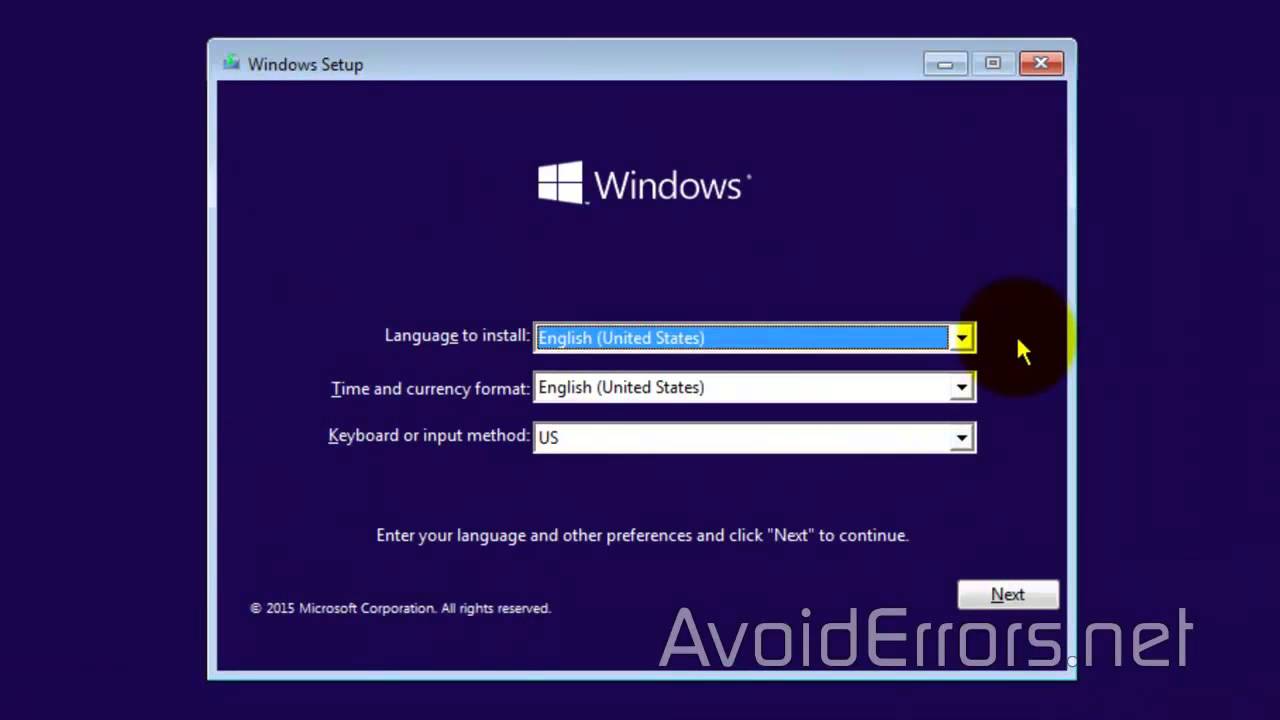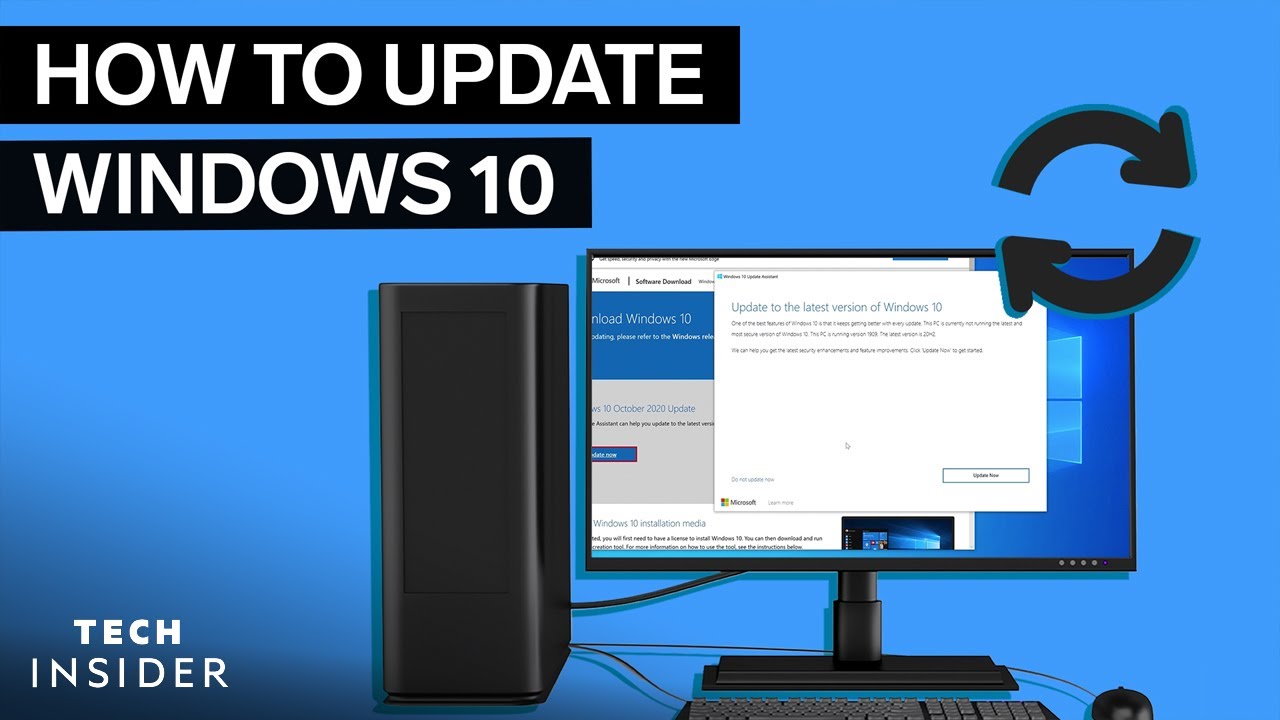Are you looking to upgrade your computer's operating system to Windows 10? Whether you're building a new computer or upgrading from an older version of Windows, installing Windows 10 can seem like a daunting task. But fear not! In this article, we will guide you through the step-by-step process of how to install Windows 10. So, let's get started and learn how toinstall Windows 10 like a pro!
How To Install Windows 10 - Full Installation

How to Install Windows 10 from a USB Flash Drive
If you are planning to install Windows 10 from scratch, then there are a few steps that you need to follow to ensure a smooth and successful installation. Here's a step-by-step guide to installing Windows 10:
Step 1 - Create A Windows 10 Installation Media
The first thing you need to do is create a Windows 10 installation media. To do this, you will need a USB flash drive with at least 8GB of storage space, or a blank DVD. You will also need to download the Windows 10 Media Creation Tool from the Microsoft website.
Once you have downloaded the Media Creation Tool, follow these steps:
- Plug in the USB flash drive or insert the blank DVD.
- Run the Media Creation Tool and select "Create installation media for another PC".
- Choose your language, edition, and architecture of Windows 10 (32-bit or 64-bit).
- Select the USB flash drive or DVD as the destination for the installation media.
- Click on "Next" and wait for the tool to download and create the installation media.
Step 2 - Backup Your Files
Before you start the installation process, make sure to back up all your important files, documents, and data to an external hard drive or a cloud storage service. This is important because the installation process will erase all the data on your computer's hard drive.
Step 3 - Insert The Installation Media And Restart Your Computer
Once you have created the installation media and backed up your files, insert the USB flash drive or DVD into your computer's USB port or DVD drive. Restart your computer and enter the BIOS setup by pressing the appropriate key (usually F2 or Delete) during the startup process.
In the BIOS setup, change the boot order so that the installation media is the first device to boot from. Save the changes and exit the BIOS setup.
Step 4 - Start The Installation Process
After your computer restarts, the Windows 10 setup screen will appear. Follow the on-screen instructions to set your language preferences, time zone, and other settings.
Click on "Install Now" to start the installation process. Accept the license terms and click on "Next". Select "Custom: Install Windows only (advanced)" when prompted.
Step 5 - Choose The Installation Location
The next step is to choose the location where you want to install Windows 10. Select the hard drive partition where you want to install Windows 10 and click on "Next".
Step 6 - Wait For The Installation To Complete
The installation process will now start, and it may take a while to complete depending on the speed of your computer and the size of the hard drive. Once the installation is complete, your computer will restart automatically.
Step 7 - Set Up Windows 10
After your computer restarts, you will be prompted to set up Windows 10. Follow the on-screen instructions to set up your user account, password, and other settings.
Congratulations, you have successfully installed Windows 10 on your computer!
How To Install Windows 10 - Upgrading From An Older Version Of Windows
If you already have an older version of Windows installed on your computer, you can upgrade to Windows 10 without losing your files, documents, and data. Here's how to upgrade to Windows 10:
Step 1 - Check Your System Requirements
Before you upgrade to Windows 10, make sure that your computer meets the minimum system requirements. Your computer must have at least a 1 GHz processor, 1 GB RAM (32-bit) or 2 GB RAM (64-bit), and 16 GB of free hard drive space (32-bit) or 20 GB (64-bit). You also need a valid license or product key for your current version of Windows.
Step 2 - Create A Backup Of Your Files
It's always a good idea to back up your important files and data before upgrading to a new operating system. You can use an external hard drive or a cloud storage service to create a backup of your files.
Step 3 - Download And Run The Windows 10 Upgrade Assistant
Go to the Microsoft website and download the Windows 10 Upgrade Assistant. This tool will check your computer's compatibility with Windows 10 and help you upgrade to the latest version.
Once you have downloaded the Windows 10 Upgrade Assistant, run it and follow the on-screen instructions.
Step 4 - Start The Upgrade Process
The Windows 10 Upgrade Assistant will check your computer's compatibility with Windows 10 and prompt you to start the upgrade process. Click on "Update Now" to begin the upgrade.
Step 5 - Wait For The Upgrade To Complete
The upgrade process may take some time, depending on the speed of your computer and the size of the hard drive. Once the upgrade is complete, your computer will restart automatically.
Step 6 - Set Up Windows 10
After your computer restarts, you will be prompted to set up Windows 10. Follow the on-screen instructions to set up your user account, password, and other settings.
Congratulations, you have successfully upgraded to Windows 10!

How to Upgrade to Windows 10 for Free
How To Find Your Windows 10 Product Key
Your Windows 10 product key is a unique code that is used to activate your copy of Windows 10. You may need to find your product key if you need to reinstall Windows 10 or if you want to upgrade from a previous version of Windows.
Here are some ways to find your Windows 10 product key:
Method 1 - Check The Packaging Or Email Receipt
If you purchased a physical copy of Windows 10, the product key should be included in the packaging. If you purchased a digital copy, check your email receipt for the product key.
Method 2 - Use A Key Finder Program
There are several third-party key finder programs available that can help you find your Windows 10 product key. Some popular key finder programs include Belarc Advisor, ProduKey, and Magical Jelly Bean Keyfinder.
Method 3 - Check Your Microsoft Account
If you have linked your Microsoft account to your Windows 10 license, you can log in to your Microsoft account and find your product key under the "Devices" section.
Method 4 - Use Command Prompt
You can also find your Windows 10 product key using Command Prompt. Here's how:
- Open Command Prompt as an administrator.
- Type "wmic path softwarelicensingservice get OA3xOriginalProductKey" (without the quotes).
- Press Enter.
- Your product key will be displayed on the screen.
How To Update Windows 10

How To Update Windows 10
Updating your Windows 10 operating system is important to ensure that your computer is running smoothly and securely. Here's how to update Windows 10:
Step 1 - Check For Updates
Go to Settings > Update & Security > Windows Update and click on "Check for updates". Windows will check for any available updates and prompt you to download and install them.
Step 2 - Download And Install Updates
If there are any available updates, click on "Download" to start downloading the updates. Once the download is complete, click on "Install" to install the updates.
Step 3 - Restart Your Computer
After the updates are installed, your computer will prompt you to restart. Click on "Restart now" to restart your computer and complete the installation of the updates.
Step 4 - Check For Additional Updates
After your computer has restarted, go back to Settings > Update & Security > Windows Update and click on "Check for updates" again. Repeat the download and installation process until there are no more available updates.
It's important to keep your Windows 10 operating system up to date to ensure that your computer has the latest security patches and bug fixes.
How To Speed Up Windows 10
If you find that your Windows 10 operating system is running slow or is not performing as well as it should, there are several things you can do to speed it up. Here are some tips to help speed up Windows 10:
Tip 1 - Remove Unwanted Programs
Go to Settings > Apps and uninstall any programs that you no longer use or need. This will free up space on your hard drive and help speed up your computer.
Tip 2 - Disable Startup Programs
Go to Task Manager > Startup and disable any programs that you don't need to start automatically when you turn on your computer. This will reduce the amount of time it takes for your computer to start up.
Tip 3 - Turn Off Visual Effects
Go to Settings > System > Advanced system settings > Performance Settings and select "Adjust for best performance". This will turn off visual effects and animations, which can help speed up your computer.
Tip 4 - Clean Up Your Hard Drive
Go to Settings > Storage and click on "Free up space now" to remove any temporary files, downloads, and other unnecessary files from your hard drive. This will free up space and help improve the performance of your computer.
Tip 5 - Disable Unnecessary Services
Go to Task Manager > Services and disable any services that you don't need. Be careful when disabling services, as some may be required for certain programs or applications to run properly.
Tip 6 - Increase Virtual Memory
Go to Control Panel > System and Security > System > Advanced system settings > Performance Settings > Advanced > Change and increase the size of your virtual memory. This will help improve the performance of your computer when running multiple programs or applications.
By following these tips, you can help speed up your Windows 10 operating system and improve the performance of your computer.
People Also Ask
How Can I Create A Bootable USB For Windows 10 Installation?
You can create a bootable USB for Windows 10 installation using the Windows 10 Media Creation Tool. You will need a USB drive with at least 8GB of space, and the tool will guide you through the process of creating the bootable USB.
Can I Upgrade From A 32-bit Version Of Windows To A 64-bit Version Of Windows 10?
No, you cannot upgrade from a 32-bit version of Windows to a 64-bit version of Windows 10. You will need to do a clean install of the 64-bit version of Windows 10.
Do I Need To Activate Windows 10 Immediately After Installation?
No, you do not need to activate Windows 10 immediately after installation. You can use Windows 10 for up to 30 days without activating it. However, you will not be able to personalize your desktop or access certain features until you activate Windows 10.
What Should I Do If I Encounter Errors During Windows 10 Installation?
If you encounter errors during Windows 10 installation, you can try restarting your computer and attempting the installation again. If the problem persists, you may need to troubleshoot the issue or seek assistance from Microsoft support.
Can I Install Windows 10 On A Mac Computer?
Yes, you can install Windows 10 on a Mac computer using Boot Camp. Boot Camp is a built-in utility in macOS that allows you to install Windows on a separate partition on your Mac's hard drive.
Conclusion
In conclusion, knowing how to install Windows 10 doesn't have to be a difficult process. With the right preparation and following the step-by-step guide we provided, you can install Windows 10 like a pro.
Remember to back up your important files, check your system requirements, and make sure you have a valid product key. Whether you're upgrading from an older version of Windows or installing on a new computer, the process is straightforward if you follow our guide. We hope the steps provided on how to install Windows 10 have been helpful and informative.